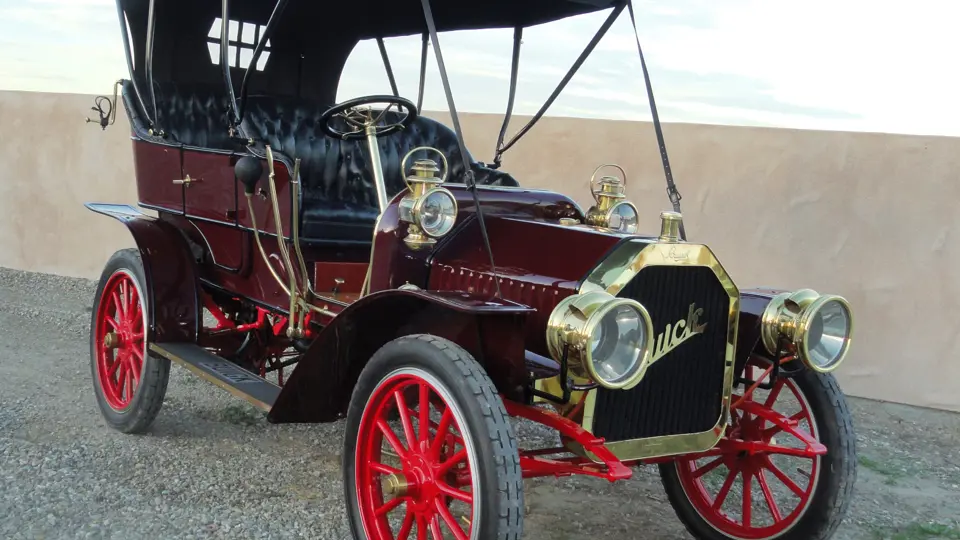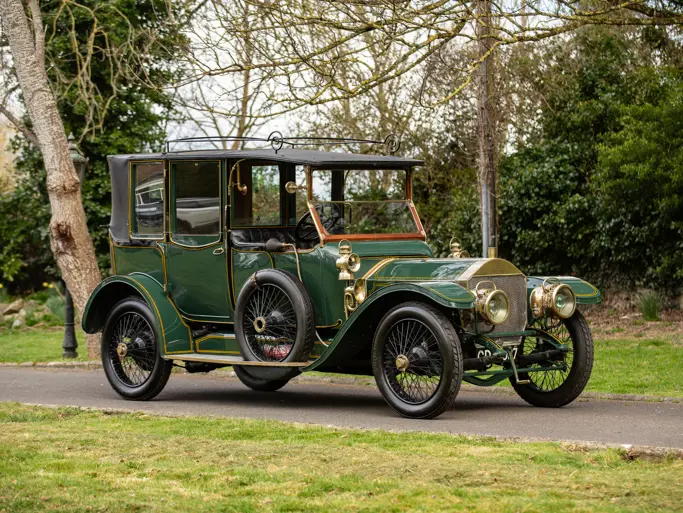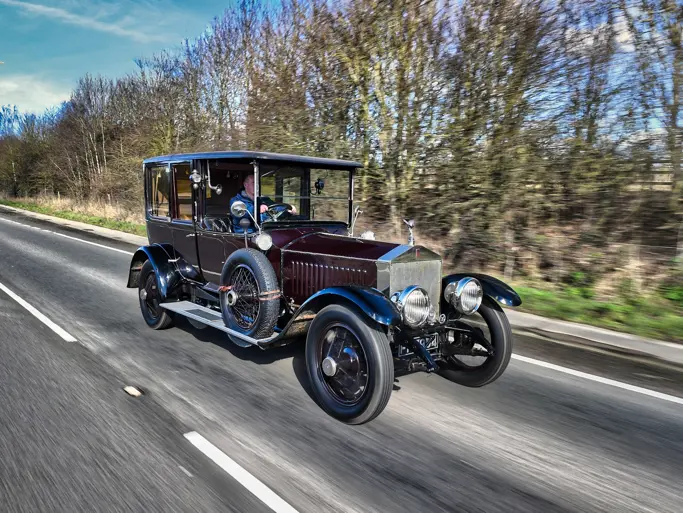22 hp, 159 cu. in. horizontally-opposed twin-cylinder engine, two-speed planetary transmission, solid front axle with three-quarter-elliptic leaf springs, live rear axle with semi-elliptic springs and single chain drive, and two-wheel mechanical brakes. Wheelbase: 92"
• Buick’s “Old Faithful” touring car
• Recent restoration
• Single ownership for 30 years
Although a Scottish-born entrepreneur gave Buick its name, it was a Michigan bicycle merchant and a French machinist who gave the car its soul. David Dunbar Buick, born in Arbroath, Scotland, came to the United States at the age of two and grew up in Detroit. While working for a plumbing fixture company, he devised a method of adhering porcelain to cast iron and became quite wealthy making sinks and tubs. He then launched a venture called Buick Auto-Vim and Power Company to make gasoline engines. Along the way he hired Walter Lorenzo Marr, a machinist and tinkerer who was running a bicycle shop, and Eugene Richard, French-born mechanic-machinist, and together they devised an engine with valves in the cylinder head, opposite the pistons, not alongside them. This “Valve-in-Head” engine would become a hallmark of Buick cars to the present day.
William Crapo Durant took a ride in a Buick in 1904. Two months later he had become a member of the company’s board of directors. A partner in the Flint, Michigan Durant-Dort Carriage Company, Durant was impressed with the car and felt it worthy of investment. An avid stock speculator, Durant had soon floated a $300,000 stock issue for what was now the Buick Motor Company.
In 1906, the Chicago American and Examiner staged a 1,000-mile relay run from Chicago to New York. A new Buick Model F was the only competitor to complete the event. A contemporary account notes that “stretches of bad road [were] rendered well nigh impassable by rainstorms…through all this struggle of a thousand miles, the Buick never failed to move forward.” The Model F earned the nickname “Old Faithful,” soon touted in a company brochure. The Model F remained in production through 1910, the last of the two-cylinder Buicks.
Owned for more than 30 years by California collector Jim Cesari, this car was used extensively for touring. About three years ago, Cesari subjected it to a thorough re-restoration, which involved nut-and-bolt disassembly and a complete mechanical rebuild. It has covered but 1,000 miles in the three years since. Ideal for one- and two-cylinder tours, it is also a potential show entry as it has never been shown since its concours-quality restoration.



 | Phoenix, Arizona
| Phoenix, Arizona


